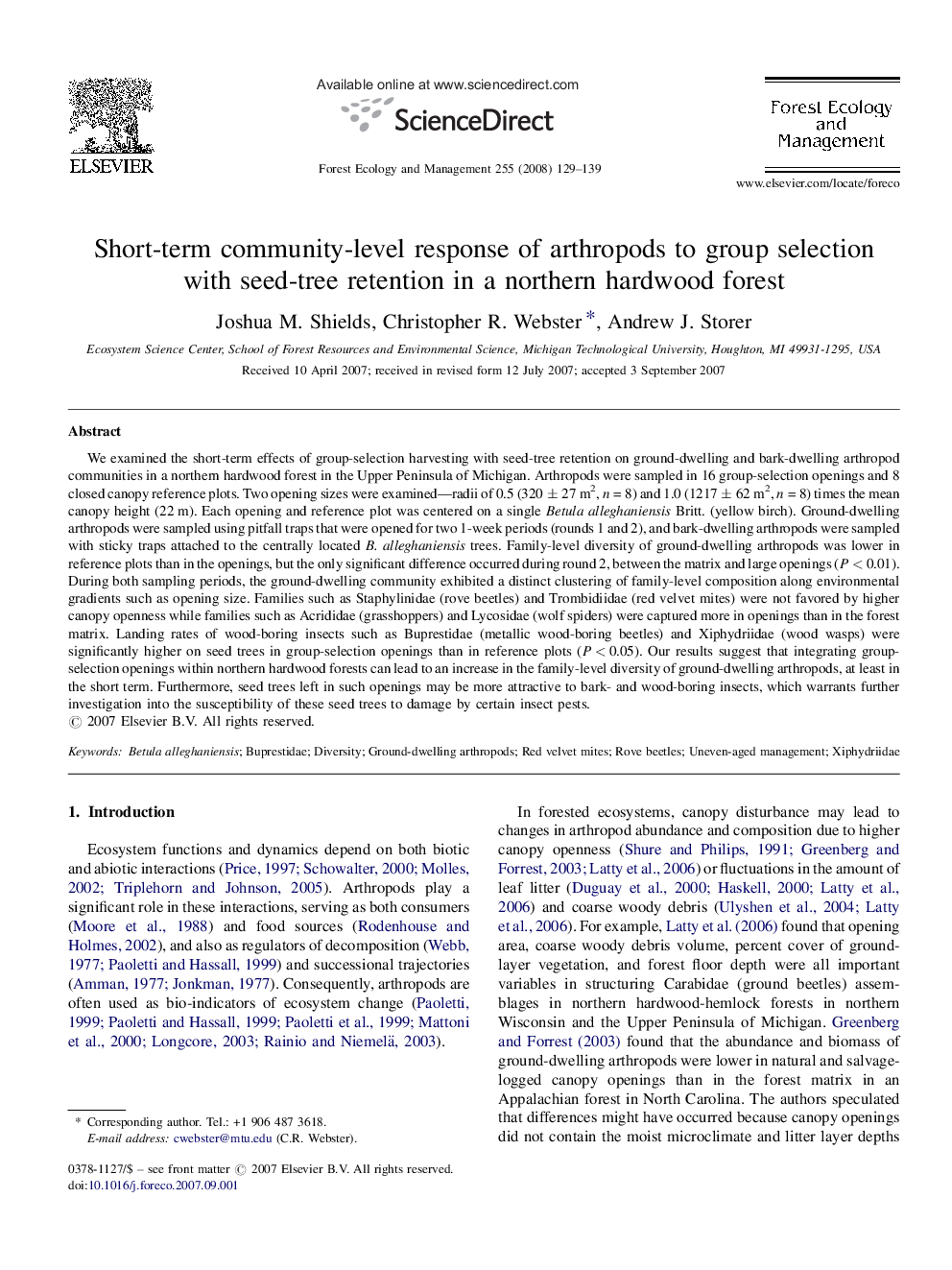| کد مقاله | کد نشریه | سال انتشار | مقاله انگلیسی | نسخه تمام متن |
|---|---|---|---|---|
| 89590 | 159347 | 2008 | 11 صفحه PDF | دانلود رایگان |

We examined the short-term effects of group-selection harvesting with seed-tree retention on ground-dwelling and bark-dwelling arthropod communities in a northern hardwood forest in the Upper Peninsula of Michigan. Arthropods were sampled in 16 group-selection openings and 8 closed canopy reference plots. Two opening sizes were examined—radii of 0.5 (320 ± 27 m2, n = 8) and 1.0 (1217 ± 62 m2, n = 8) times the mean canopy height (22 m). Each opening and reference plot was centered on a single Betula alleghaniensis Britt. (yellow birch). Ground-dwelling arthropods were sampled using pitfall traps that were opened for two 1-week periods (rounds 1 and 2), and bark-dwelling arthropods were sampled with sticky traps attached to the centrally located B. alleghaniensis trees. Family-level diversity of ground-dwelling arthropods was lower in reference plots than in the openings, but the only significant difference occurred during round 2, between the matrix and large openings (P < 0.01). During both sampling periods, the ground-dwelling community exhibited a distinct clustering of family-level composition along environmental gradients such as opening size. Families such as Staphylinidae (rove beetles) and Trombidiidae (red velvet mites) were not favored by higher canopy openness while families such as Acrididae (grasshoppers) and Lycosidae (wolf spiders) were captured more in openings than in the forest matrix. Landing rates of wood-boring insects such as Buprestidae (metallic wood-boring beetles) and Xiphydriidae (wood wasps) were significantly higher on seed trees in group-selection openings than in reference plots (P < 0.05). Our results suggest that integrating group-selection openings within northern hardwood forests can lead to an increase in the family-level diversity of ground-dwelling arthropods, at least in the short term. Furthermore, seed trees left in such openings may be more attractive to bark- and wood-boring insects, which warrants further investigation into the susceptibility of these seed trees to damage by certain insect pests.
Journal: Forest Ecology and Management - Volume 255, Issue 1, 20 February 2008, Pages 129–139